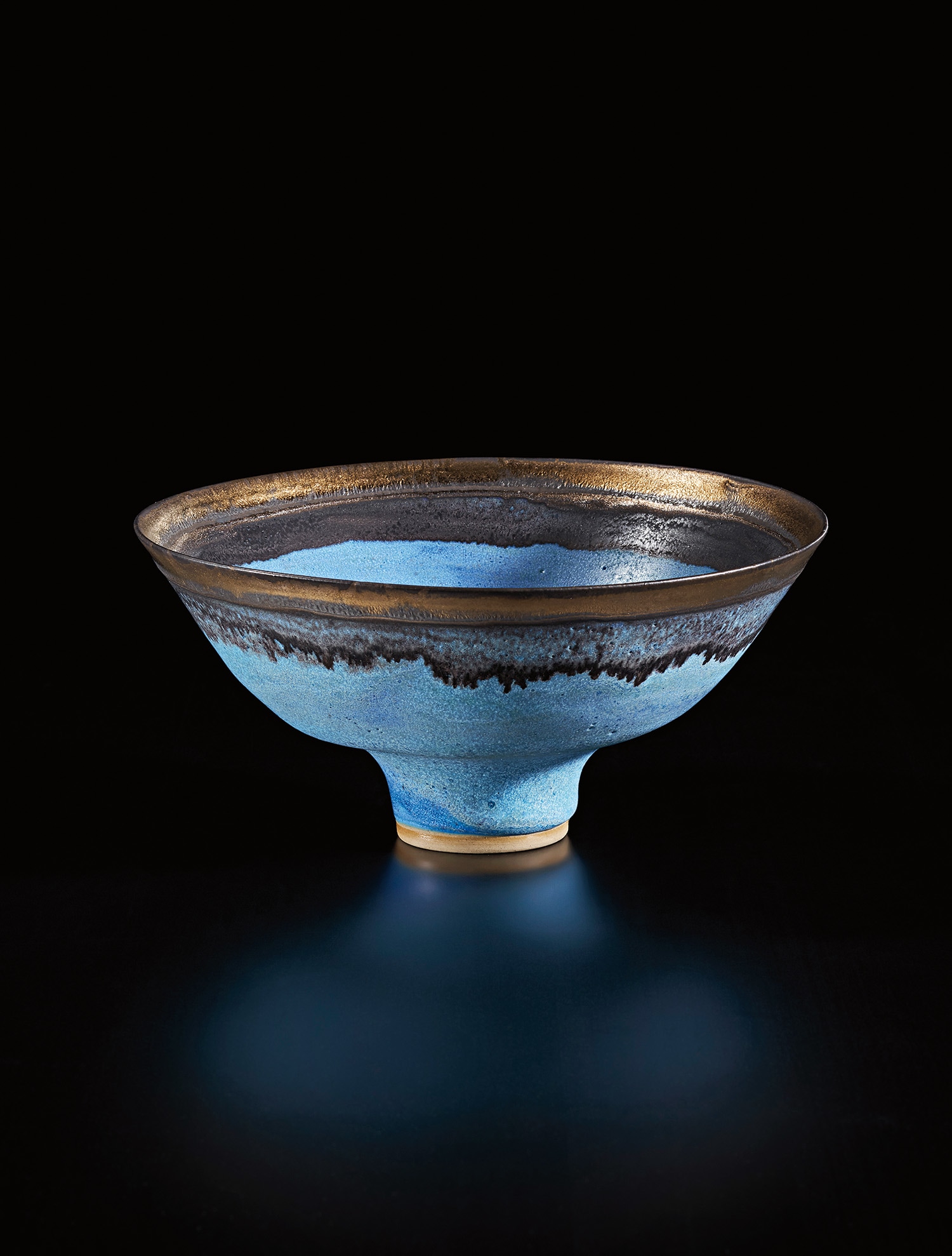



61
Lucie Rie
Footed bowl
Full-Cataloguing
Lucie Rie’s pots became more decorative by the 1970s, concentrating more on one-off pieces, and placing less emphasis on the functional tablewares that gave her some financial stability in the 1950s and 60s. She began to concentrate more on her bottles, vases, and bowls, alongside occasional domestic orders, shapes she would refine and perfect as ‘pots for the house', as she stated her intention back in Vienna in the 1930s. But now in her later years, the demand for everyday functional items was in decline, due in part to market forces. Better industrially-produced tablewares were eclipsing studio sales amongst potters. In addition, the emerging gallery culture for ceramics encouraged the making of more special exhibition pots, and Rie was by 1970 a world famous potter, with a recent show at the Museum Boijmans Van Beuningen in Rotterdam and an Arts Council retrospective in 1967 to her credit. An O.B.E. was awarded the following year, the first of such honours.
In the last two decades of her life Lucie Rie was able to consolidate her interest in colour, concentrating on some of the vivid glazes she was formulating in the 1950s and 60s; rich bronzes, brilliant yellows and pinks, greens, and luminous blues. As the critic and curator Margot Coatts wrote of her later work, she was dealing more in 'abstract elements', focusing on and refining her most characteristic forms, and ones which could have a considerable sculptural presence. They also revealed a potter able to enjoy herself on more expansive pieces, and this bowl from 1985 (first exhibited at Fischer Fine Art) shows Rie at her richest and most elemental. Generously flared, with a typically deep foot, she used a smooth luminous blue frosted glaze on both interior and exterior, and with a manganese / copper bronze band around the rim, this generously bleeding into the base glaze like a rain cloud washing into a blue sky. Such objects express the fundamentals of the potter’s art; containment, volume and space, and the 'latent energy' (as the potter Joanna Constantinidis called it) of something having risen organically, expanding on the wheel. As the critic Herbert Read wrote in 1931, 'Pottery is pure art; it is art freed from any imitative intention. Sculpture, to which it is most nearly related, had from the first an imitative intention, and is perhaps to that extent less free for the expression of the will to form than pottery; pottery is plastic art in its most abstract essence'. This bowl epitomises this quality of pure abstraction.
It is little wonder that such apparently simple shapes by Rie connected visually with twentieth-century art and architecture, the abstract colour fields of Mark Rothko and Barnett Newman, and the building forms of Ludwig Mies van de Rohe and Alvar Aalto. This is the context in which her work is often seen, and reminds us that Rie’s provenance was after all that of a Viennese modernist, someone who was well versed in contemporary art and the legacy of functionalist building and design. The luminous colour combinations she used on her pots, such as the present work, have an almost baroque sensuality; Lucie Rie at her most opulent, and connecting again with the Jugendstil influences of the city of her birth. But they relate to the earliest bowl shapes as well, for example the prehistoric pots she admired at Avebury, and to Chinese classical forms, all assimilated into her own unmistakable language.
-David Whiting
Lucie Rie
Austrian | B. 1902 D. 1995Dame Lucie Rie studied under Michael Powolny at the Kunstgewerbeschule in Vienna before immigrating to London in 1938. In London she started out making buttons for the fashion industry before producing austere, sparsely decorated tableware that caught the attention of modernist interior decorators. Eventually she hit her stride with the pitch-perfect footed bowls and flared vases for which she is best-known today. She worked in porcelain and stoneware, applying glaze directly to the unfired body and firing only once. She limited decoration to incised lines, subtle spirals and golden manganese lips, allowing the beauty of her thin-walled vessels to shine through. In contrast with the rustic pots of English ceramicist Bernard Leach, who is considered an heir to the Arts and Crafts movement, collectors and scholars revere Rie for creating pottery that was in dialogue with the design and architecture of European Modernism.